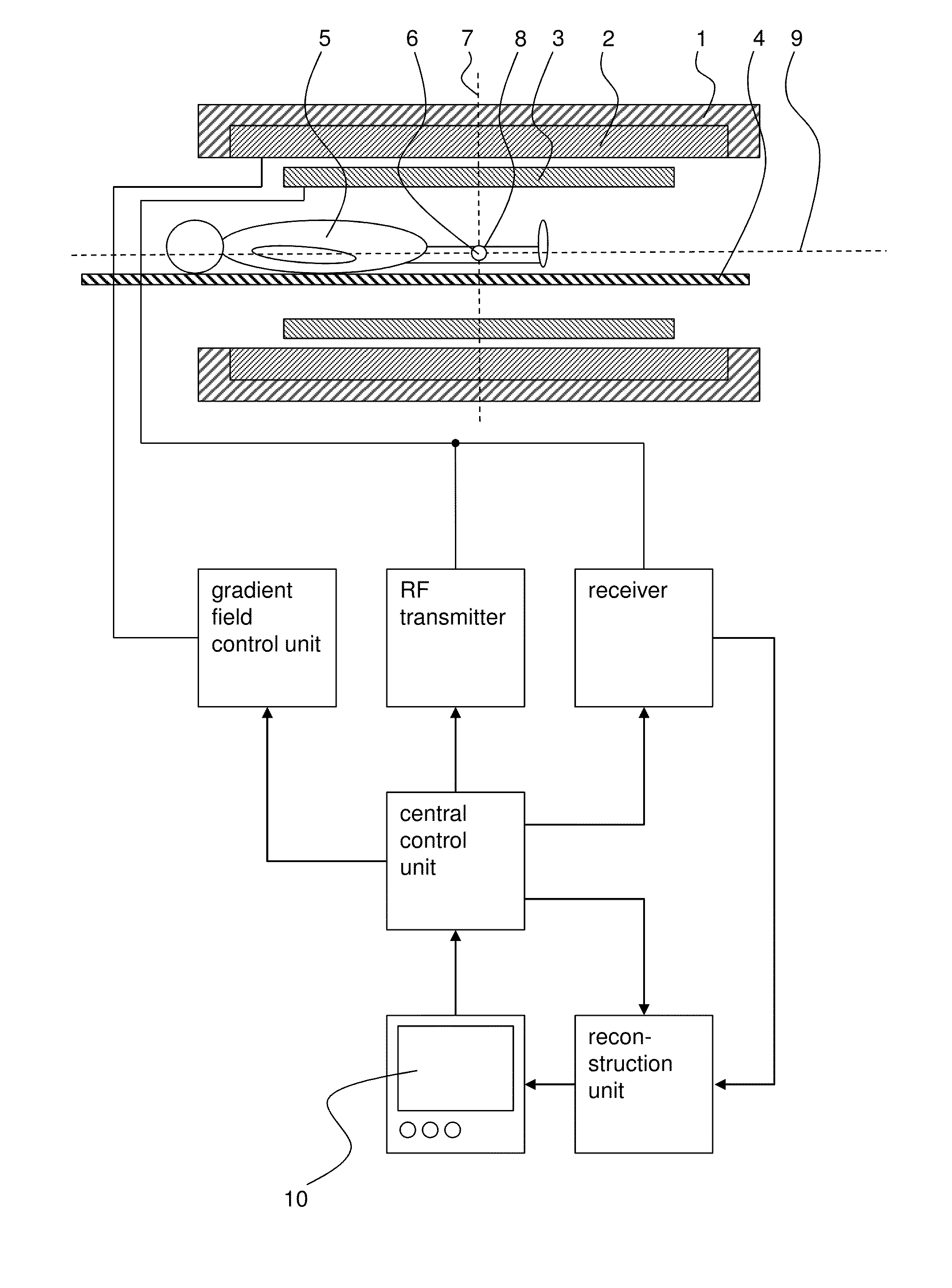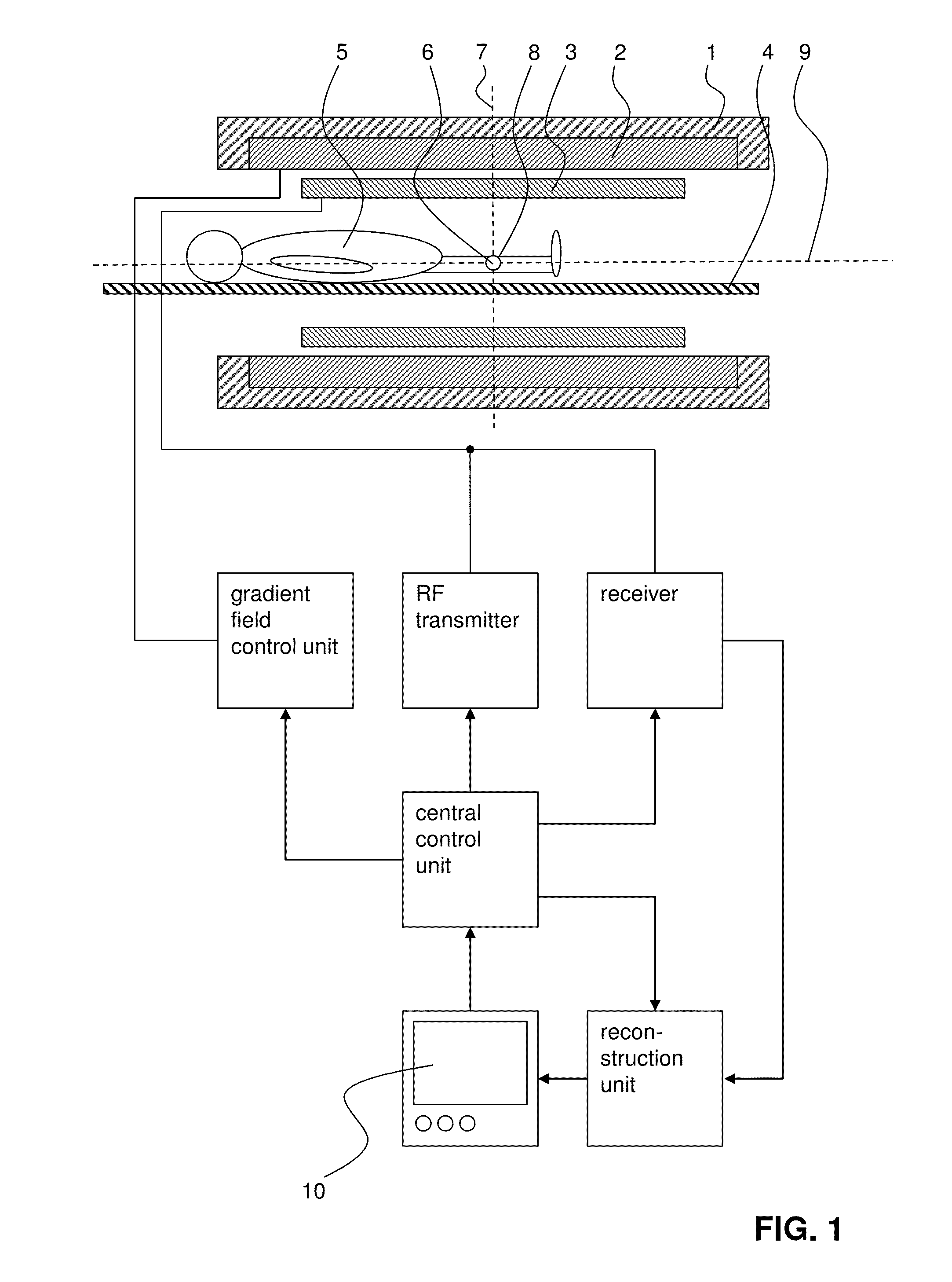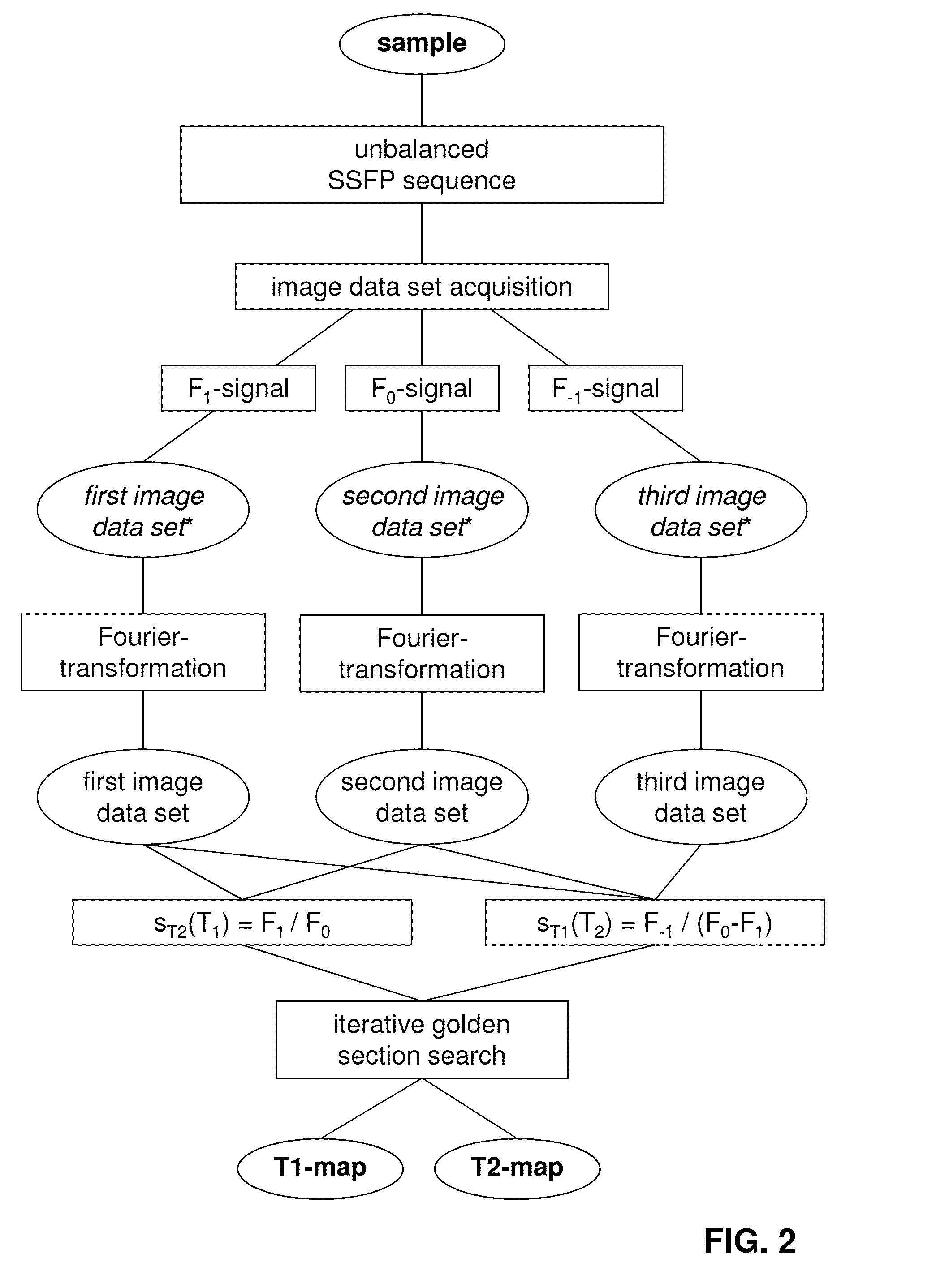Magnetic resonance imaging method for the quantification of the t1 and/or t2 relaxation times in a sample
a magnetic resonance imaging and quantification method technology, applied in the field of magnetic resonance imaging, can solve the problems of ssfp-based imaging techniques, time-consuming 1 /sub>recovery or t2 /sub>decay curve, and hampered quantification of relaxation times. achieve the effect of fast and accurate quantification of longitudinal (t1)
- Summary
- Abstract
- Description
- Claims
- Application Information
AI Technical Summary
Benefits of technology
Problems solved by technology
Method used
Image
Examples
Embodiment Construction
[0070]In FIG. 1, an exemplary MRI system is shown which serves to carry out the inventive method for the quantification of the longitudinal (T1) and transverse (T2) relaxation times in a sample. A flow chart illustrating an example of an inventive method is shown in FIG. 2.
[0071]The MRI system comprises a main magnet 1 for producing a main magnetic field B0. The main magnet 1 usually has the essential shape of a hollow cylinder with a horizontal bore. Inside the bore of the main magnet 1 a magnetic field is present, which is essentially uniform at least in the region of the isocenter 6 of the main magnet 1. The main magnet 1 serves to at least partly align the nuclear spins of a sample 5 arranged in the bore. Of course, the magnet 1 does not necessarily be cylinder-shaped, but could for example also be C-shaped.
[0072]The sample 5 is arranged in such a way on a moving table 4 in the bore of the main magnet 1, that the part of the sample 5, of which the longitudinal (T1) and / or transv...
PUM
 Login to View More
Login to View More Abstract
Description
Claims
Application Information
 Login to View More
Login to View More - R&D
- Intellectual Property
- Life Sciences
- Materials
- Tech Scout
- Unparalleled Data Quality
- Higher Quality Content
- 60% Fewer Hallucinations
Browse by: Latest US Patents, China's latest patents, Technical Efficacy Thesaurus, Application Domain, Technology Topic, Popular Technical Reports.
© 2025 PatSnap. All rights reserved.Legal|Privacy policy|Modern Slavery Act Transparency Statement|Sitemap|About US| Contact US: help@patsnap.com



